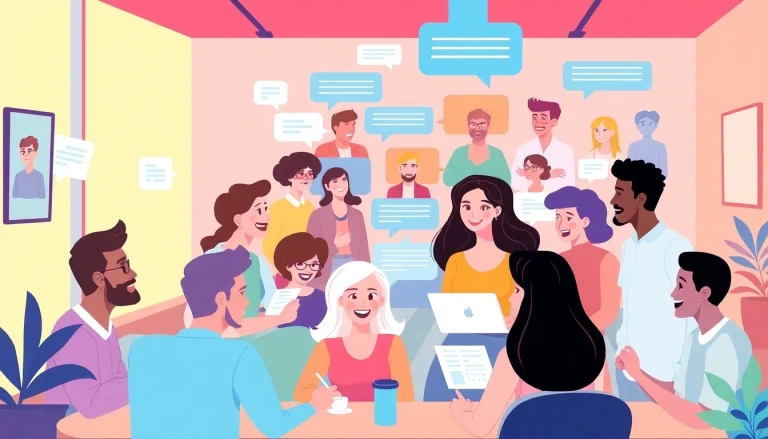Understanding Communication in Relationships
Effective communication in relationships is often considered the cornerstone of any successful partnership. Without proper communication, feelings can become misinterpreted, trust is jeopardized, and intimacy inevitably suffers. This article delves into the fundamental aspects of communication in relationships, how it helps build trust, its key elements, and the detrimental impacts of poor communication.
The Role of Communication in Building Trust
Trust is an integral part of healthy relationships, grounded in open dialogue and shared experiences. Communication fosters trust by allowing partners to express their thoughts, feelings, and vulnerabilities without fear of judgment. When partners communicate effectively, they showcase reliability and consistency, which reinforces emotional safety. For example, when one partner shares a concern, and the other listens attentively and responds compassionately, it creates a safe space to discuss important matters without fear of conflict or dismissal.
Key Elements of Effective Communication in Relationships
Understanding the key elements that contribute to effective communication can significantly enhance relationship satisfaction. These elements include:
- Active Listening: Listening with the intent to understand rather than merely waiting for your turn to speak fosters a deeper connection and helps validate your partner’s feelings.
- Openness and Honesty: Transparent communication encourages honesty, allowing partners to express their true feelings, needs, and concerns.
- Clarity and Conciseness: Being clear and concise helps prevent misunderstandings. This can be particularly important during conversations regarding sensitive topics.
- Respect: Respectful communication involves valuing each other’s perspectives and addressing disagreements without hostility or contempt.
Impact of Poor Communication on Relationships
Poor communication can lead to significant challenges within relationships. Misunderstandings, assumptions, and unexpressed emotions can quickly evolve into resentment. Without clear communication, partners may feel unheard or undervalued, leading to conflicts that could have been avoided. For instance, if someone feels their needs are consistently ignored, they may withdraw emotionally, further widening the gap between partners.
Common Barriers to Communication in Relationships
Identifying Personal and External Obstacles
Several barriers can impede effective communication, both personal and external. Personal barriers include misconceptions shaped by past experiences, anxiety about conflict, or low self-esteem, while external barriers might involve environmental distractions or lack of private space for conversations. Recognizing these barriers is crucial to addressing and overcoming them, allowing for more productive dialogue.
How Misunderstandings Emerge in Conversations
Misunderstandings can arise from ambiguous language, tone, or body language. Often, intentions are misread due to assumptions and preconceived notions. For example, if one partner says, “I’m fine,” while their tone suggests otherwise, the other partner may misinterpret this as disregard for their feelings, leading to further conflict. This highlights the importance of clarity in both verbal and non-verbal communication.
The Psychological Impact of Negative Communication
Negative communication patterns, such as criticism, defensiveness, stonewalling, and contempt, can have profound psychological effects. These patterns not only erode trust but also foster an atmosphere of hostility and insecurity. Over time, individuals exposed to continuous negative communication may experience increased stress, anxiety, or even depression, impacting their overall well-being in the relationship.
Strategies for Improvement in Communication in Relationships
Active Listening Techniques for Better Dialogue
Improving active listening skills can markedly enhance communication. Techniques such as summarizing what the other person has said, asking open-ended questions, and reflecting feelings can deepen understanding. For instance, if your partner shares their concern about a situation, responding with, “What I hear you saying is…” not only shows that you are engaged but also provides an opportunity for clarification, reducing the chance of misunderstanding.
Utilizing Nonverbal Cues to Enhance Understanding
Nonverbal communication plays a critical role in how messages are received. Body language, eye contact, and gestures can convey emotions far more powerfully than words alone. Being aware of your own body language and being attentive to your partner’s signals can help bridge communication gaps. For example, leaning in while your partner speaks can indicate interest and support.
Practicing Empathy in Difficult Conversations
Empathy allows partners to understand each other’s emotions and perspectives better. In challenging discussions, practicing empathy involves acknowledging your partner’s feelings and validating their experiences. Statements like, “I can see how that would make you feel upset,” can go a long way in diffusing tension and promoting resolution.
Conflict Resolution through Effective Communication in Relationships
Recognizing and Addressing Differences Constructively
Every relationship will encounter differences and disagreements. The key to managing conflict lies in recognizing these differences as opportunities for growth rather than threats. Constructive dialogue means expressing disagreements respectfully and focusing on the problem at hand rather than personal attacks. A collaborative approach can lead to solutions that respect both partners’ needs and perspectives.
Steps to Resolve Disagreements Healthy
To resolve disagreements in a healthy manner, consider these steps:
- Identify the Issue: Clearly define what the disagreement is about.
- Communicate Openly: Use “I” statements to express your feelings without blaming your partner.
- Seek Solutions Together: Brainstorm potential solutions and be willing to compromise.
- Follow Up: After reaching a resolution, check in with each other to ensure the solution is working.
The Importance of Timing and Environment
The timing and environment of discussions also contribute significantly to effective communication. Avoiding critical conversations during periods of stress or when distractions are present can lead to misunderstandings. Choosing a calm and private setting fosters openness and receptivity, increasing the chances of productive dialogue.
Long-term Benefits of Strong Communication in Relationships
Enhancing Emotional Intimacy through Open Dialogue
Strong communication enhances emotional intimacy, creating a deeper bond between partners. Sharing inner thoughts and feelings nurtures vulnerability, allowing each partner to feel valued and understood. This deepening sense of connection can significantly enhance relationship satisfaction and long-term commitment.
Building a Stronger Partnership Foundation
Effective communication over time builds a strong foundation for the partnership. When couples consistently engage in healthy dialogue, they develop a shared language that embodies trust, affection, and understanding. This foundation allows couples to navigate challenges more effectively and anchor their relationship during turbulent times.
Measuring Improvement in Relationship Satisfaction
Finally, an observable sign of improved communication is an increase in overall relationship satisfaction. Couples may notice greater harmony, reduced conflicts, and an evolving understanding of each other’s needs. Regular check-ins regarding communication styles and emotional needs can further enhance this satisfaction, ensuring that both partners feel heard and valued.








